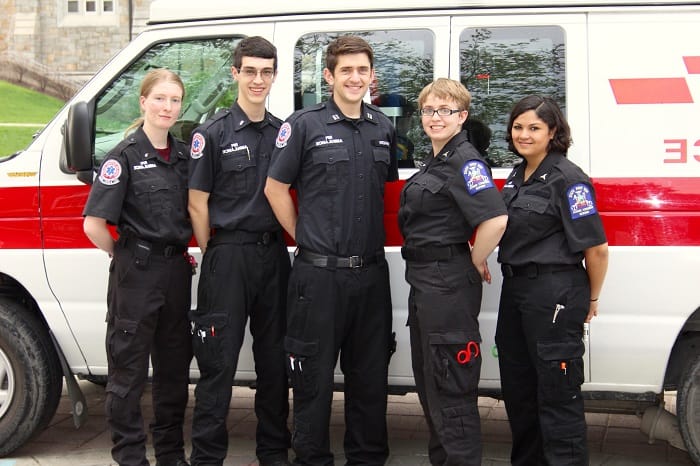Cleaning Ambulance essay
You can consolidate and save money. You don’t need the toxic products some departments use. The driving force behind selecting a chemical to clean an ambulance should be the type of organism the chemical is meant to eliminate. With the single exception of Clostridium difficile (commonly known as C diff), which requires a chlorine-based cleaning product, most ambulance providers need only low-level products
You should have your cleaning plan schedule to conduct cleaning regularly and effectively. The plan should contain the time, place, and items that have to be cleaned along with the indication of detergent and cleaners that should be used to clean the interior of the emergency vehicle.
Decontaminating an ambulance is a process. The first step is cleaning to remove debris. Only after a surface has been cleaned can it be decontaminated using one of three types of disinfection. The first, or highest level, is sterilization. Sterilization completely eliminates all organisms and is used for equipment that will be reprocessed (or reused) and comes into contact with mucus membranes, such as a laryngoscope blade. Chemical or steam-based sterilization can be used, but the correct procedure must be followed. Disposable items don’t need a high level of sterilization. Non-critical items would include stethoscopes or blood-pressure cuffs. Cleaning of floors, stretchers and walls don’t require the same strict standards of the highest level of decontamination.
You will require a gown, protective eyewear and special gloves when used. OSHA requires that providers wear dishwashing-type gloves, not disposable ones, when using any cleaning product, even disinfectant wipes. For the most part, wipes and paper towels used in the cleaning process are not considered medical waste and can be disposed of in the regular trash, even if bodily fluids are present. Using the regular trash to dispose of this waste will significantly cut costs. However, every state has different regulations, so she suggests reviewing state definitions regarding medical waste. One of the most effective disinfectants is a simple bleach and water solution, mixed at a ratio of 1:100.
Presentation
While making a presentation, I conducted the preparation for the presentation collecting the information that I will need. In this regard, I collected and processed all the information, while preparing the pamphlet. First of all, I focused on the identification of major risks and threats which emerge in the course of the work of the average ambulance team. In this regard, it was easy to identify various infectious diseases, such as hepatitis, HIV, and others which may be transmitted to the ambulance staff from patients in case of not cleaning the ambulance properly. As I informed my team mates of the risks they are exposed to, I placed emphasis on the importance of cleaning the ambulance thoroughly and regularly. I explained them that cleaning the ambulance is the only way to avoid developing an infectious disease being contaminated through the unclean ambulance environment. At first, my team mates does not really looked anxious about what I was telling them, until I noticed that the probability of developing an infectious disease in the unclean ambulance seven times higher compared to the clean one. After that I have noticed that my team mates have started to grow interested in what I was talking about.
Then, I gave them the pamphlet printed for each team mate. I gave them some time to read and look through the pamphlet. After that I told them that it is not a mere pamphlet containing the general information on how to clean the ambulance. Instead, this is a set of recommendations which they would better take into account and follow, if they want to prevent them from catching an infectious disease or having other health problems. I told them that cleaning is easy when they know how and what to clean. Then, I asked them to look at the part concerning the planning and scheduling of the cleaning. I told them that it should a sort of the routine procedure for them” “It’s like washing your hands before having a meal during your service. You can’t just leave your ambulance unclean because it’s your health that is at stake”.
Moreover, I tried to refer to the responsibility of my team mates, who started to object me that they do not really care about those threats they expose themselves to. I reminded them that cleaning the ambulance is not just the matter of their health: “Think of patients and your team mates? Don’t you care they can get a disease because of you, because of your laziness and negligence in cleaning the ambulance?” After that my team mates seemed to be more convinced of the importance of cleaning the ambulance. Then I asked them whether they know how to clean the ambulance properly. Naturally, they immediately responded positively. Then I asked them to look through the pamphlet again and asked several questions about how to clean the ambulance properly and my team mates could not respond to all of them properly. Hence, they agreed that they should work harder on learning how to clean the ambulance properly.
Do you like this essay?
Our writers can write a paper like this for you!



